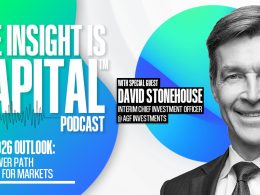by Denise Chisholm, Director of Quantitative Market Strategy, Fidelity Investments
Earlier this month, the employment report came with one of the biggest downward revisions in the history of the series – even when scaled to total employment. Revisions of that magnitude are extremely rare outside recessions. But here’s the catch with recessions: they’re only confirmed in hindsight; on average 6 months after they begin. And because the average recession lasts a year, and stocks (on average) bottom halfway through, history tells us the worst of the equity market damage has often passed by the time the recession is declared. Why does that matter now? Because it illustrates that payrolls are a lagging indicator, and the recent revisions underscore the point.

Historically, some of the best forward returns in equities have occurred in the quarters right after the worst revisions. How is that possible? Because stocks tend to price in reality long before government data reflects it. Bad data can read as “good news” if the market’s already priced it in. Which brings us to today. That bear adjacent market behavior in April now looks less like a coincidence and more like the market “knew” what revisions are now confirming. The reality is that markets can be forward looking, and government data is often backward looking. As odd as it sounds, history shows the market often gets the outlook more right – and faster – than the data does.

Now, let’s turn our attention to the Fed. Yes, large revisions that show weakness usually precede Fed rate cuts. But not always. In fact, a third of the time, the Fed doesn’t ease.

Historically, while forward returns are better when the Fed does cut rates, the 12-month performance is still above average even when they don’t. So, if you are relying on the Fed to “solve” the employment problem, history suggests that might be unnecessary – at least as it relates to the market. There are no guarantees. Stocks fell further after the negative revisions in 2000 and 2009. But history makes a compelling case: the market often adjusts well before the data does. And relying on lagging indicators like payrolls to drive investment decisions has the potential to, more often than not, hurt returns instead of helping them.

This information is provided for educational purposes only and is not a recommendation or an offer or solicitation to buy or sell any security or for any investment advisory service. The views expressed are as of the date indicated, based on the information available at that time, and may change based on market or other conditions. Opinions discussed are those of the individual contributor, are subject to change, and do not necessarily represent the views of Fidelity. Fidelity does not assume any duty to update any of the information.
Source: This post was originally published on Linkedin August 15, 2025.
Copyright © Fidelity Investments















